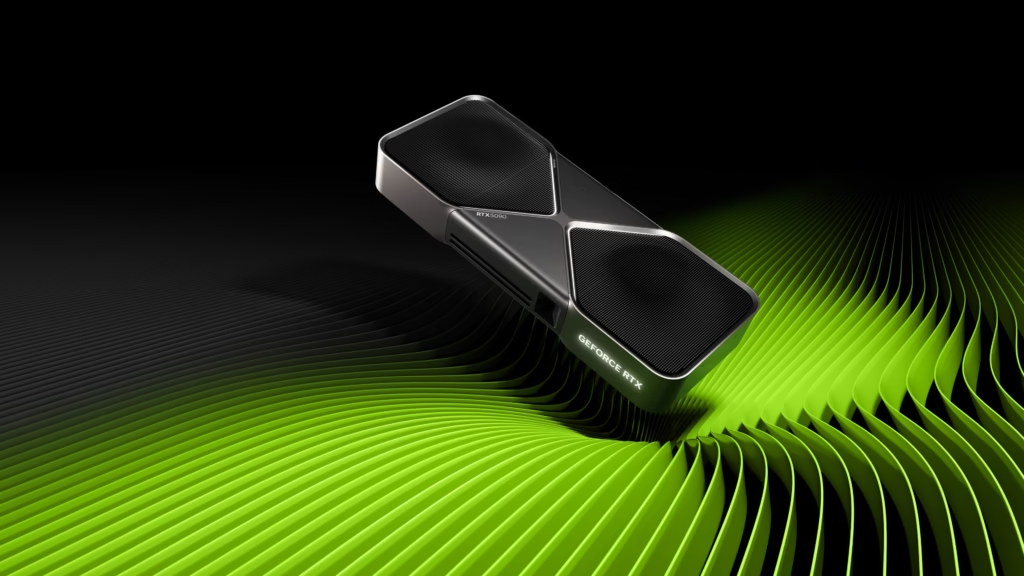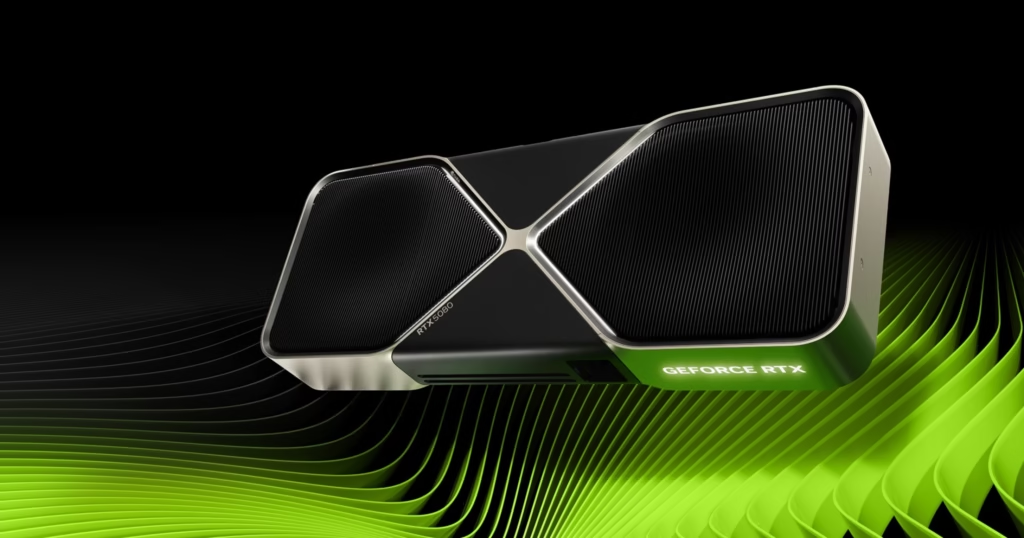The GeForce RTX 50 Series graphics cards and laptops, powered by the NVIDIA Blackwell RTX architecture, significantly enhance frame rates by as much as 8X through the use of NVIDIA DLSS 4 with Multi Frame Generation. They also achieve a reduction in latency of up to 75% with NVIDIA Reflex 2, providing gamers and creators with unparalleled graphical fidelity through NVIDIA RTX Neural Shaders, among other advancements.
These GPUs and laptops revolutionize performance, facilitate transformative AI experiences, and allow creators to complete their workflows in record time. For further insights, view the NVIDIA Keynote presented by CEO Jensen Huang below, and continue reading for comprehensive details.
Neural Rendering Marks a New Era in Computer Graphics
Neural rendering represents a groundbreaking advancement in computer graphics. By incorporating neural networks into the rendering process, we can achieve significant improvements in performance, image quality, and interactivity, resulting in unprecedented levels of immersion.
The initial implementation of neural rendering was through DLSS, which utilized lower resolution rendered frames as input for a neural network trained to produce full-resolution frames. DLSS has progressed to a stage where it can generate complete frames and comprehend scene composition, including shadows, reflections, and occlusion, thereby producing images that surpass native rendering quality. With the introduction of DLSS 4 featuring Multi Frame Generation, in conjunction with the comprehensive suite of DLSS technologies, we can enhance frame rates by up to 8X compared to traditional rendering methods while delivering image quality that exceeds native rendering.
However, DLSS is merely the starting point.
We have embedded neural networks within programmable shaders to develop neural shaders. RTX Neural Shaders are poised to drive the next decade of graphic innovations. They can compress textures by up to 7X, significantly conserving graphics memory, and are capable of producing cinematic-quality textures and advanced lighting effects in games.
DLSS represents merely the initial phase of advancements.
We have incorporated neural networks within programmable shaders to develop neural shaders. RTX Neural Shaders are poised to lead the forthcoming decade of graphical innovations. They facilitate texture compression by as much as 7X, significantly conserving graphics memory. Additionally, they enable the creation of cinematic-quality textures and more sophisticated lighting effects in gaming environments.
RTX Neural Faces introduces a groundbreaking method for enhancing facial quality through generative AI. Rather than relying on conventional rendering techniques, Neural Faces utilizes a basic rasterized face along with 3D pose data as input, employing a real-time generative AI model to produce a more lifelike facial representation.
The capabilities of neural rendering with DLSS 4 are exemplified in our latest Zorah tech demonstration.
Innovations in NVIDIA Blackwell Architecture

The NVIDIA RTX Blackwell architecture has been meticulously designed and optimized for neural rendering. It boasts an extraordinary level of processing power, featuring new engines and functionalities specifically aimed at accelerating the next generation of neural rendering.
With an impressive count of up to 92 billion transistors, Blackwell stands as the most powerful consumer GPU ever developed. The Blackwell streaming multiprocessor (SM) has undergone enhancements to increase processing throughput and has been more closely integrated with the Tensor Cores to optimize the performance of neural shaders. Furthermore, Blackwell benefits from various hardware and software innovations that enhance Shader Execution Reordering. The reordering logic has been improved to be twice as efficient, thereby boosting the speed and accuracy of reordering, which in turn accelerates the performance of neural shaders.
The new Blackwell Tensor Cores are equipped with substantial AI processing capabilities and support accelerated processing of FP4 precision models. With FP4, Blackwell Tensor Cores can not only expedite model processing but also achieve this with reduced graphics memory consumption.
To accommodate the frame pacing demands of next-generation DLSS Multi Frame Generation, the Blackwell architecture has been developed with advanced hardware flip metering capabilities, ensuring the speed and precision necessary for a seamless, high-quality user experience.
Additionally, Blackwell introduces entirely new RT Cores engineered to handle extensive amounts of intricate geometry during ray tracing. These RT Cores achieve double the ray triangle intersection rate compared to the previous generation and incorporate improved compression techniques to minimize memory usage. This advancement enables Blackwell GPUs to ray trace levels of geometry previously deemed unattainable.
Furthermore, Blackwell is enhanced with PCIe Gen5 and DisplayPort 2.1b UHBR20, supporting display resolutions of up to 8K at 165Hz.
For laptops in the GeForce RTX 50 Series, innovative Max-Q technologies such as Advanced Power Gating, Low Latency Sleep, and Accelerated Frequency Switching can extend battery life by as much as 40% compared to earlier models.
To support this substantial processing capability, Blackwell is outfitted with the fastest memory available—GDDR7, which offers speeds of up to 30Gbps. With G7 memory, Blackwell GPUs can achieve memory bandwidth of up to 1.8TB/s.
GeForce RTX 50 Series Graphics Cards
On January 30th, the GeForce RTX 5090 and GeForce RTX 5080 will be released to the market. The GeForce RTX 5070 Ti and GeForce RTX 5070 are set to launch in February.
Limited editions of the NVIDIA Founders Edition for the GeForce RTX 5090, GeForce RTX 5080, and GeForce RTX 5070 graphics cards will be available globally. Additionally, both stock-clocked and factory-overclocked versions of all four GPUs will be offered by leading add-in card manufacturers such as ASUS, Colorful, Gainward, GALAX, GIGABYTE, INNO3D, KFA2, MSI, Palit, PNY, and ZOTAC, as well as in desktop systems from builders like Falcon Northwest, Maingear, Origin PC, and others.

GeForce RTX 5090: Twice as Fast as the GeForce RTX 4090
Owing to the innovations of the Blackwell architecture and DLSS 4, the GeForce RTX 5090 delivers performance that is twice that of the GeForce RTX 4090.
In the realm of Generative AI applications, image generation achieves a speed increase of twofold while utilizing half the memory when employing FP4 on the GeForce RTX 5090, in contrast to FP16 on the GeForce RTX 4090. FP4 represents a lower quantization technique akin to file compression, which effectively reduces model sizes.
The FLUX.1 [dev] model from Black Forest Labs necessitates over 23GB of VRAM when operating in standard FP16. On the GeForce RTX 4090, the image generation process takes approximately 15 seconds. However, with the implementation of FP4, the VRAM requirement is diminished, allowing the GeForce RTX 5090 to complete image generation in just over five seconds.
The GeForce RTX 5090 is set to launch on January 30th, with a starting price of $1,999.
Founders Edition Innovative Double Flow Through Design
Our exclusive NVIDIA GeForce RTX Founders Edition graphics cards represent the pinnacle of engineering, crafted from high-quality materials, featuring distinctive designs, and incorporating advanced cooling technologies.
For the GeForce RTX 5090, our engineering team has developed an extraordinary 2-slot card measuring 304mm in length, 137mm in height, and 2 slots in width, designed for SFF-Ready Enthusiasts. This card is capable of efficiently cooling the high-performance Blackwell GPU within, thanks to a groundbreaking double flow through design.
You may also like
Latest jobs & career opportunities in emerging technologies